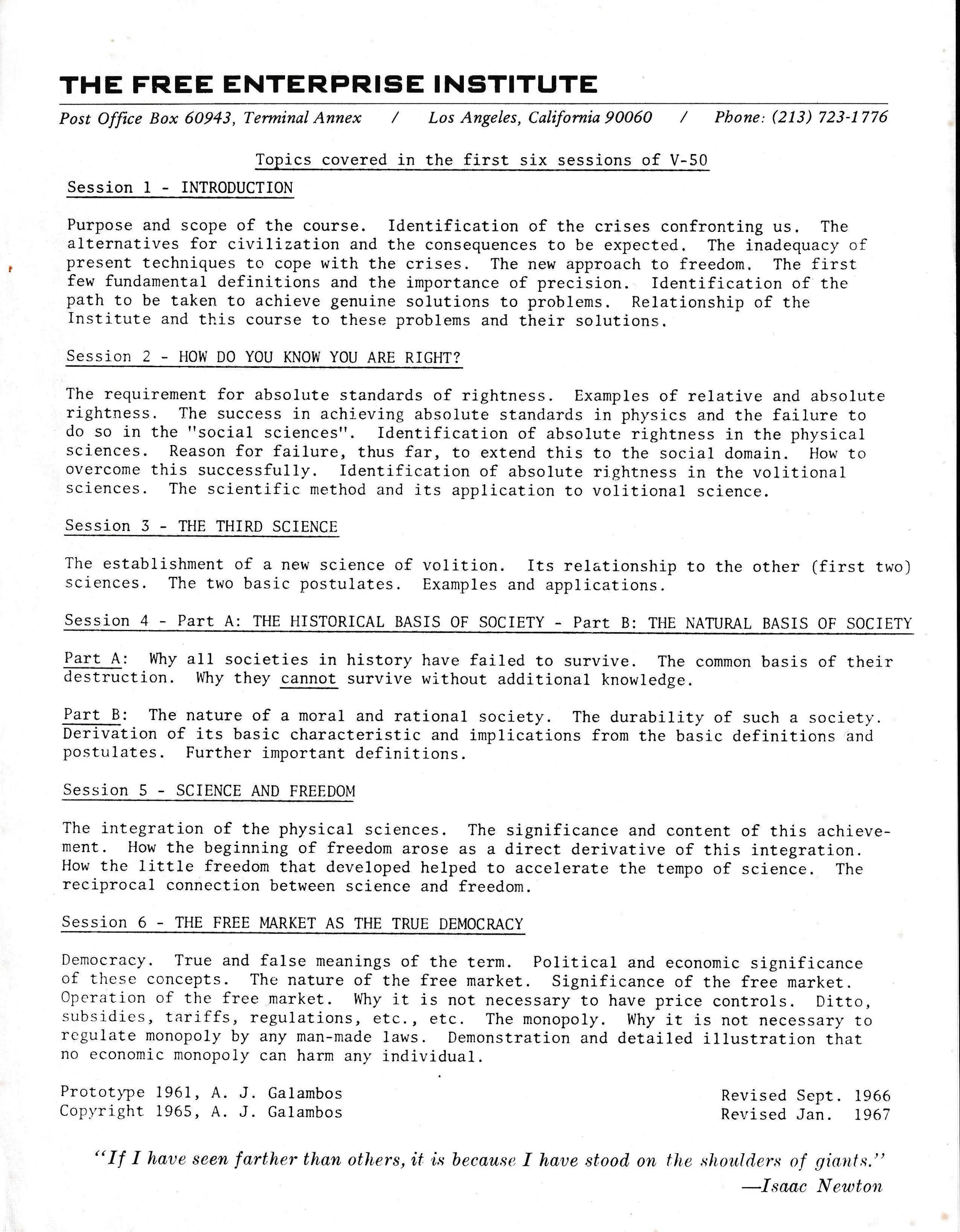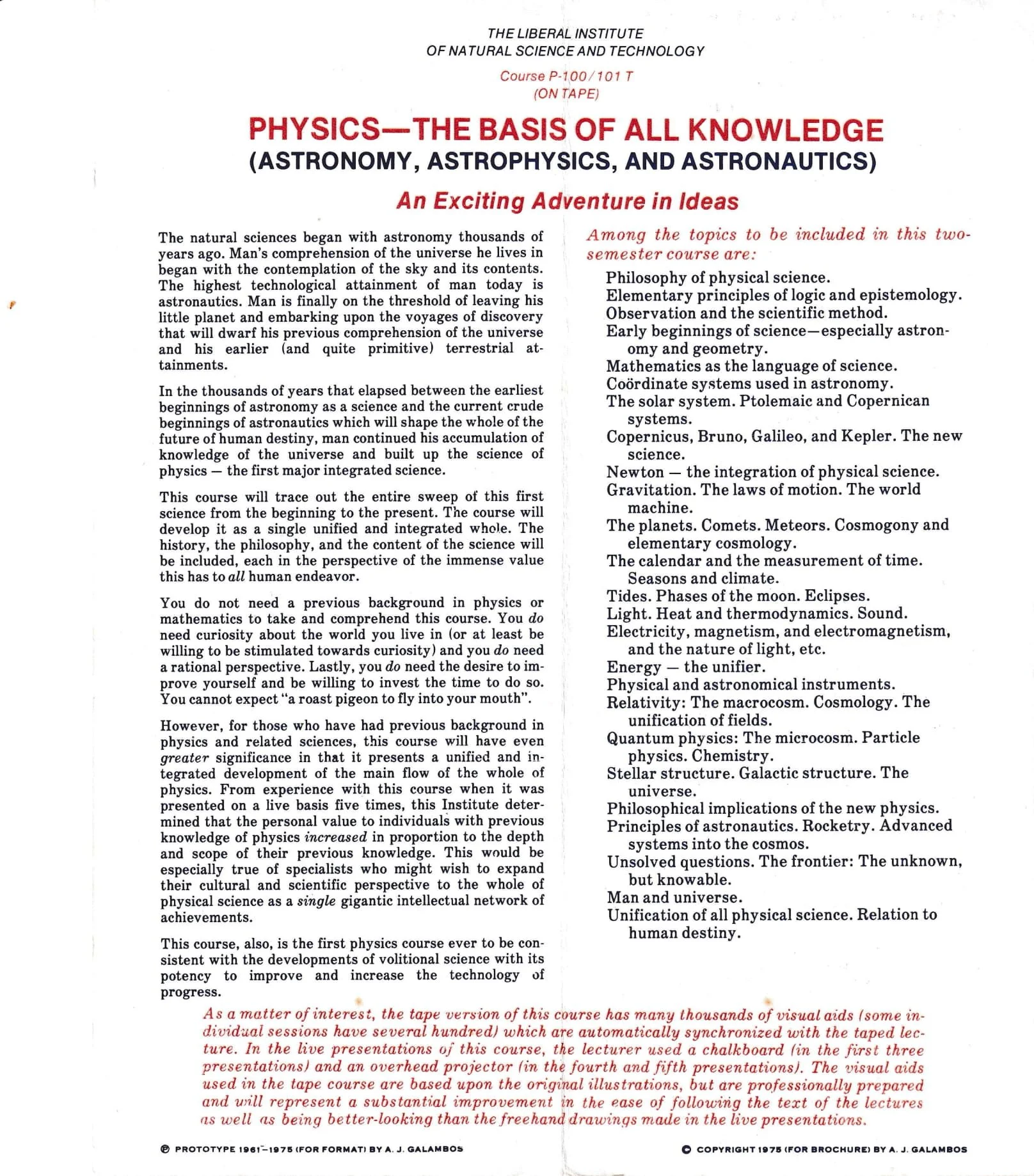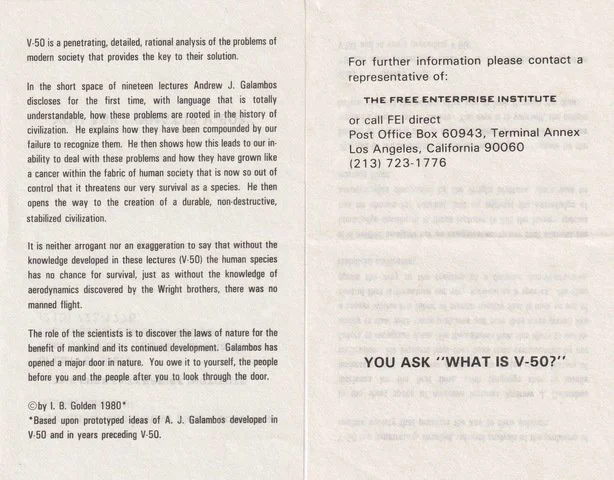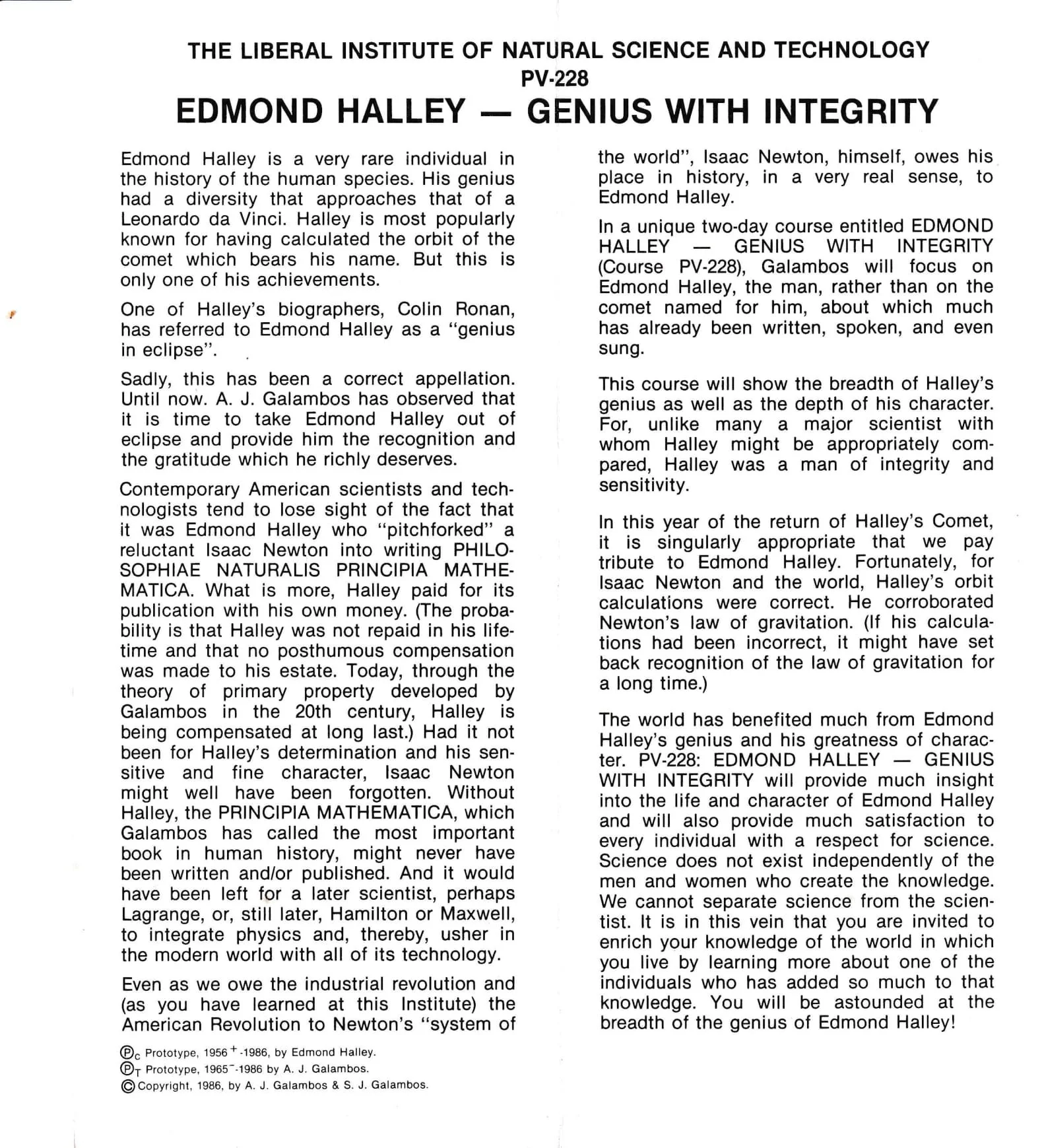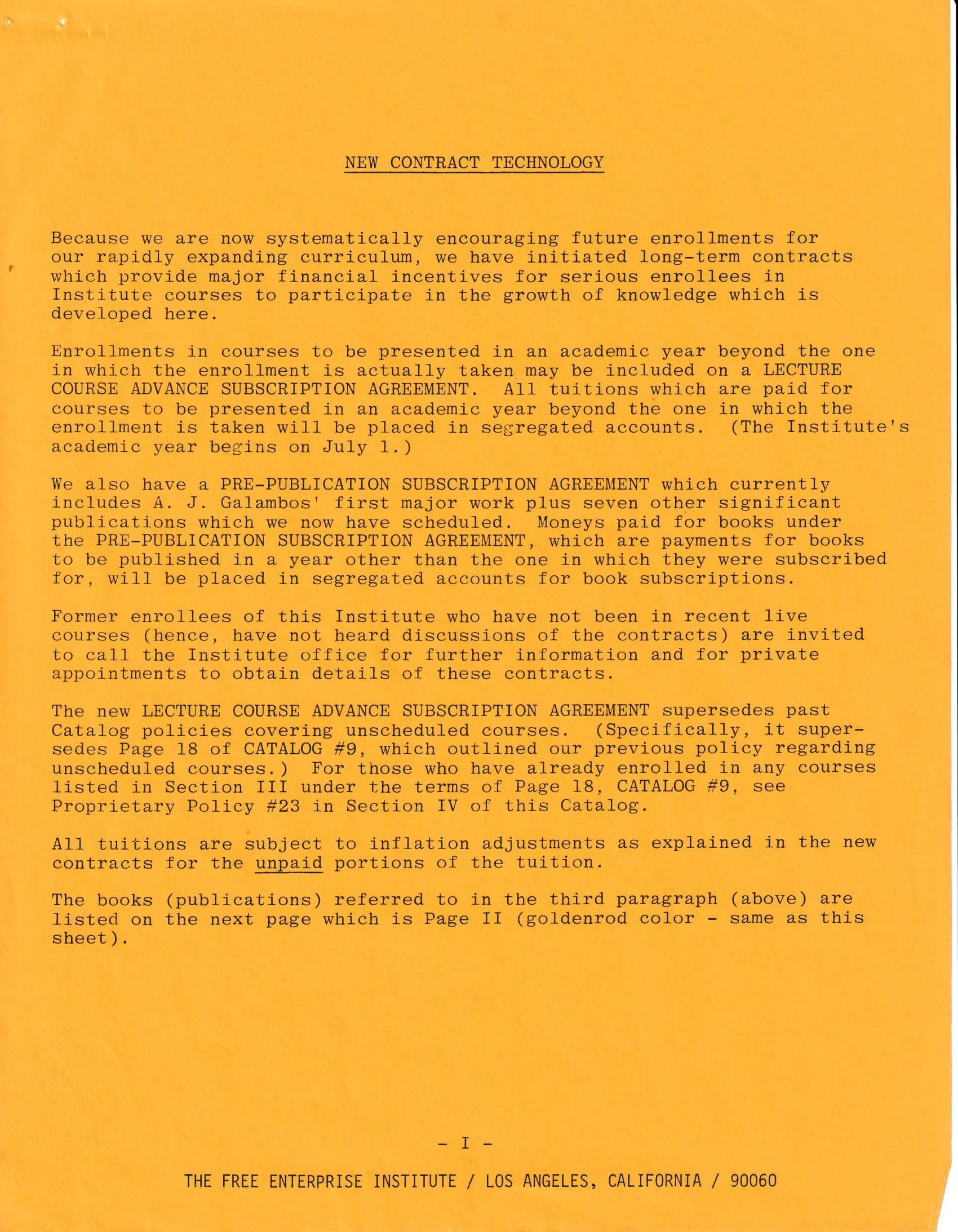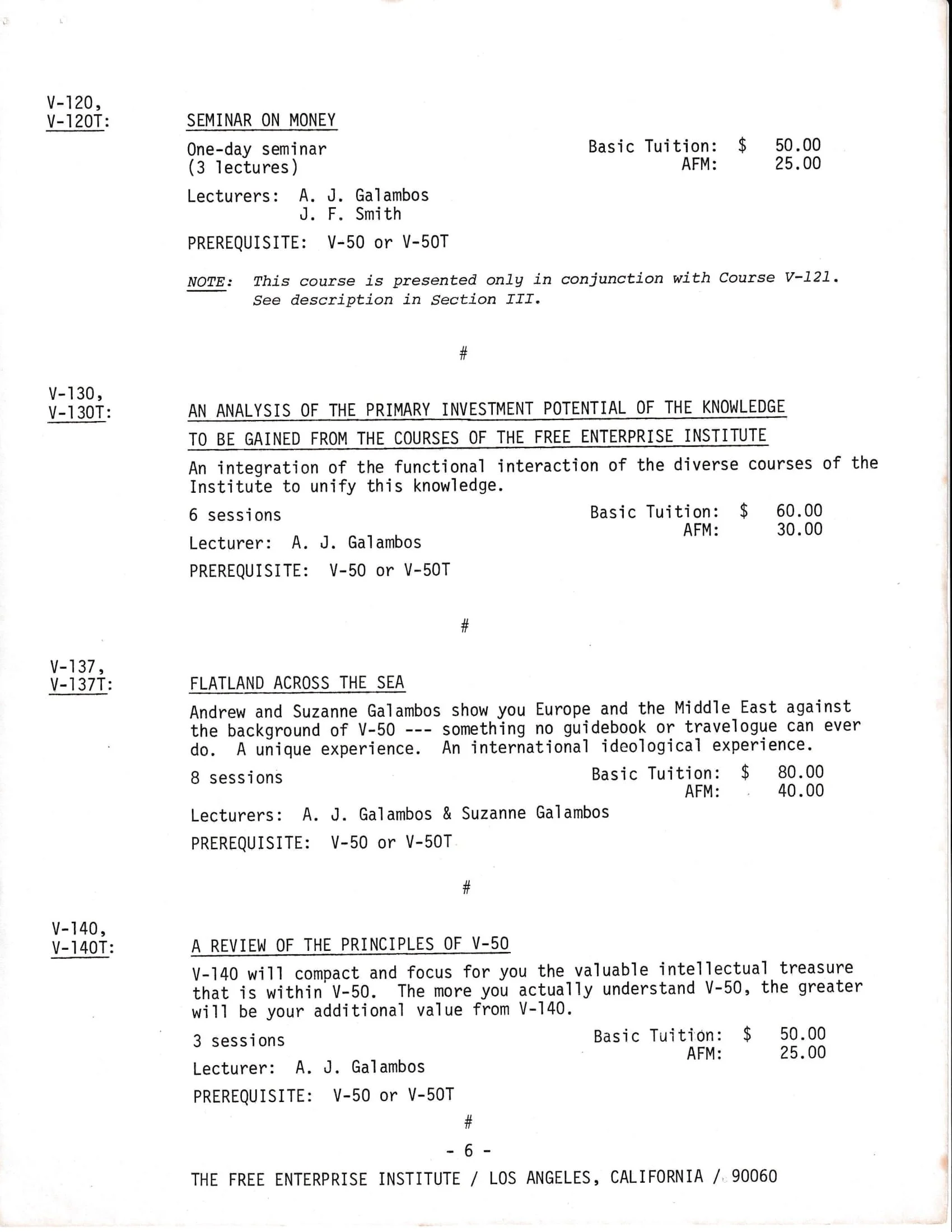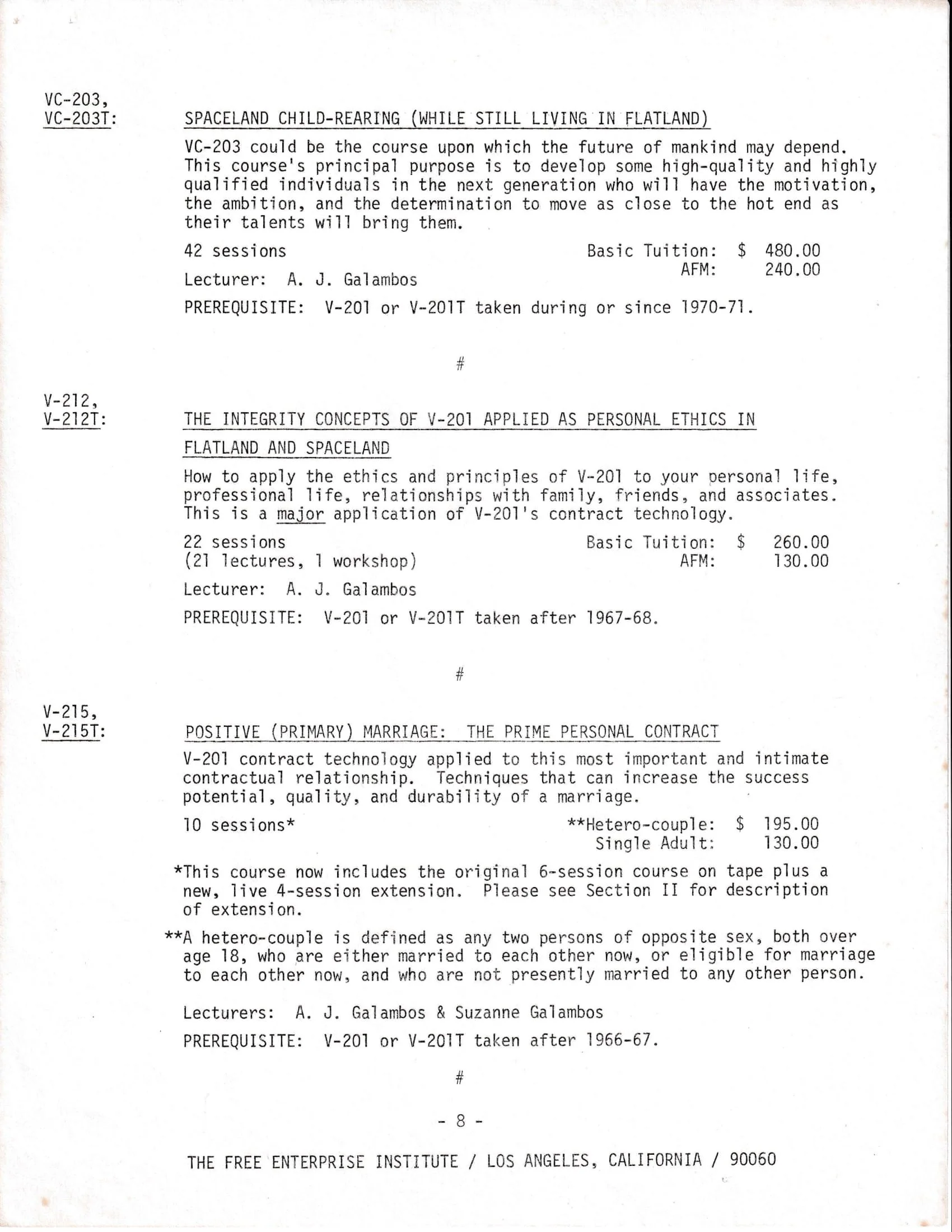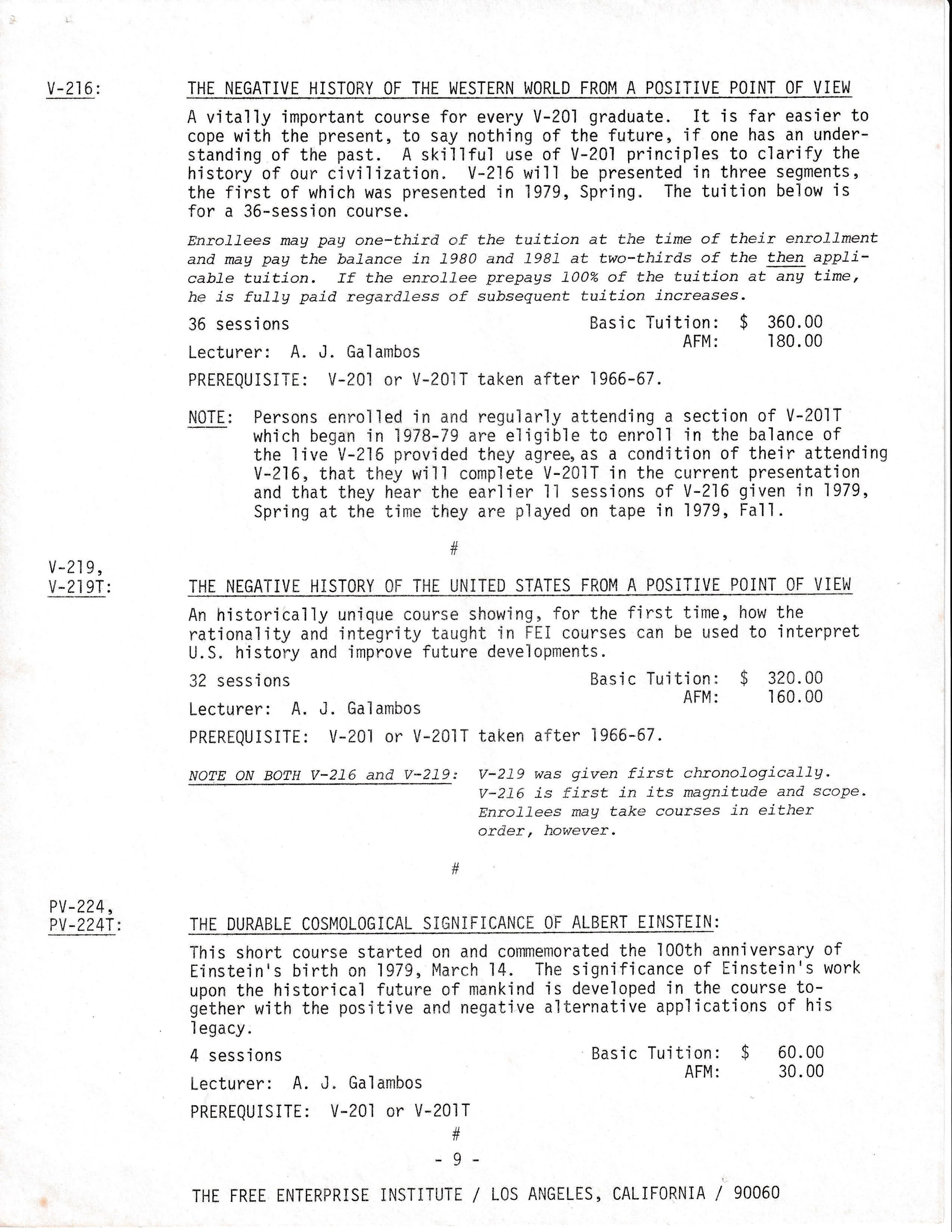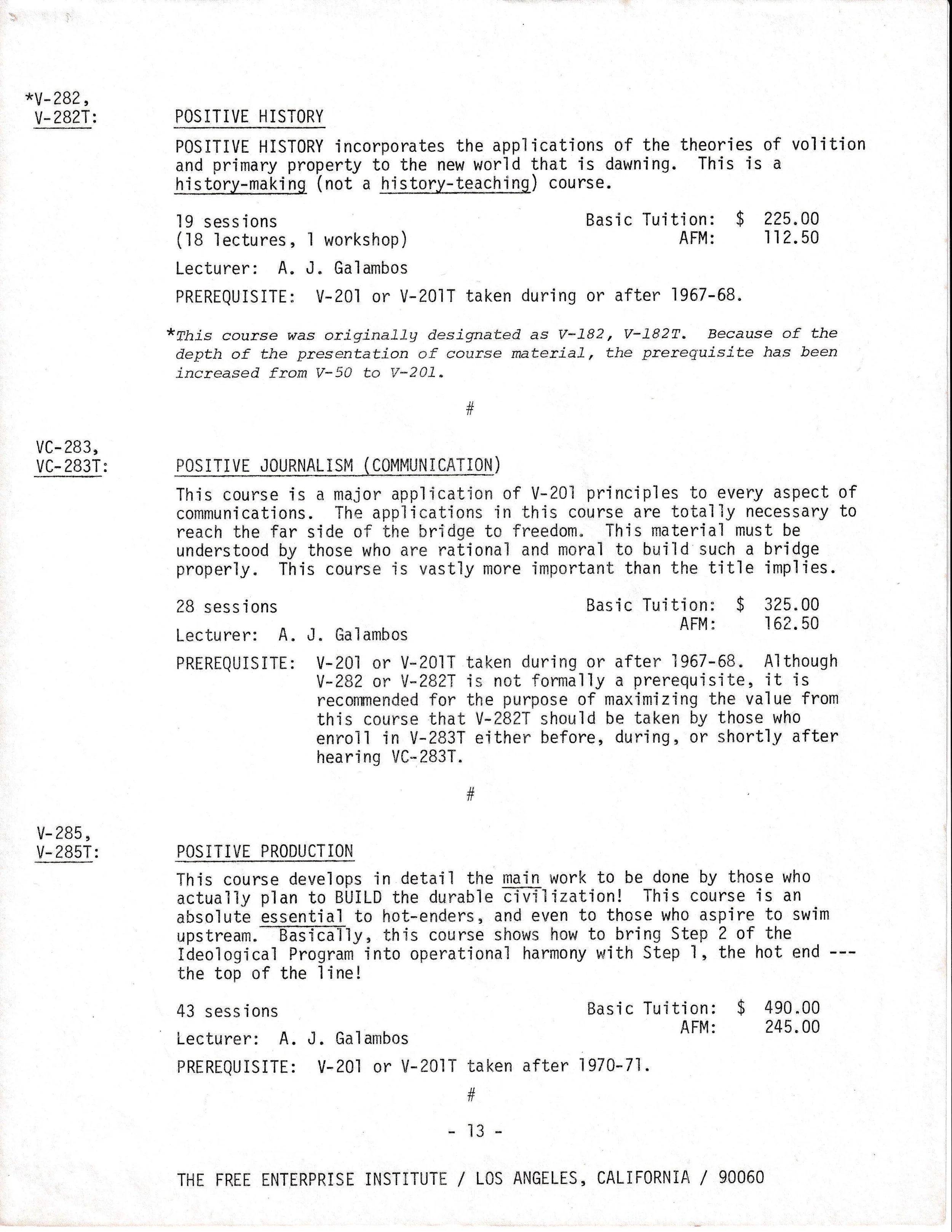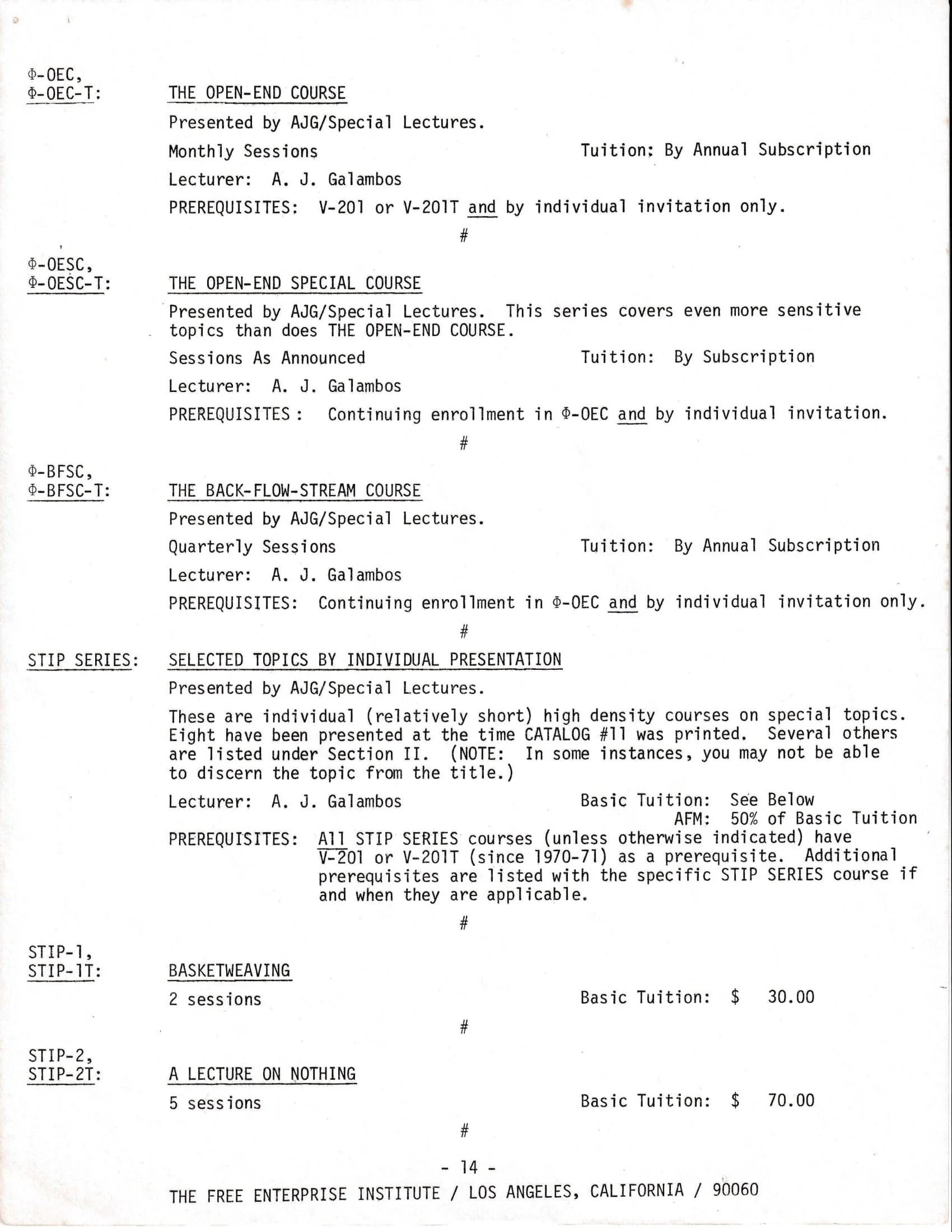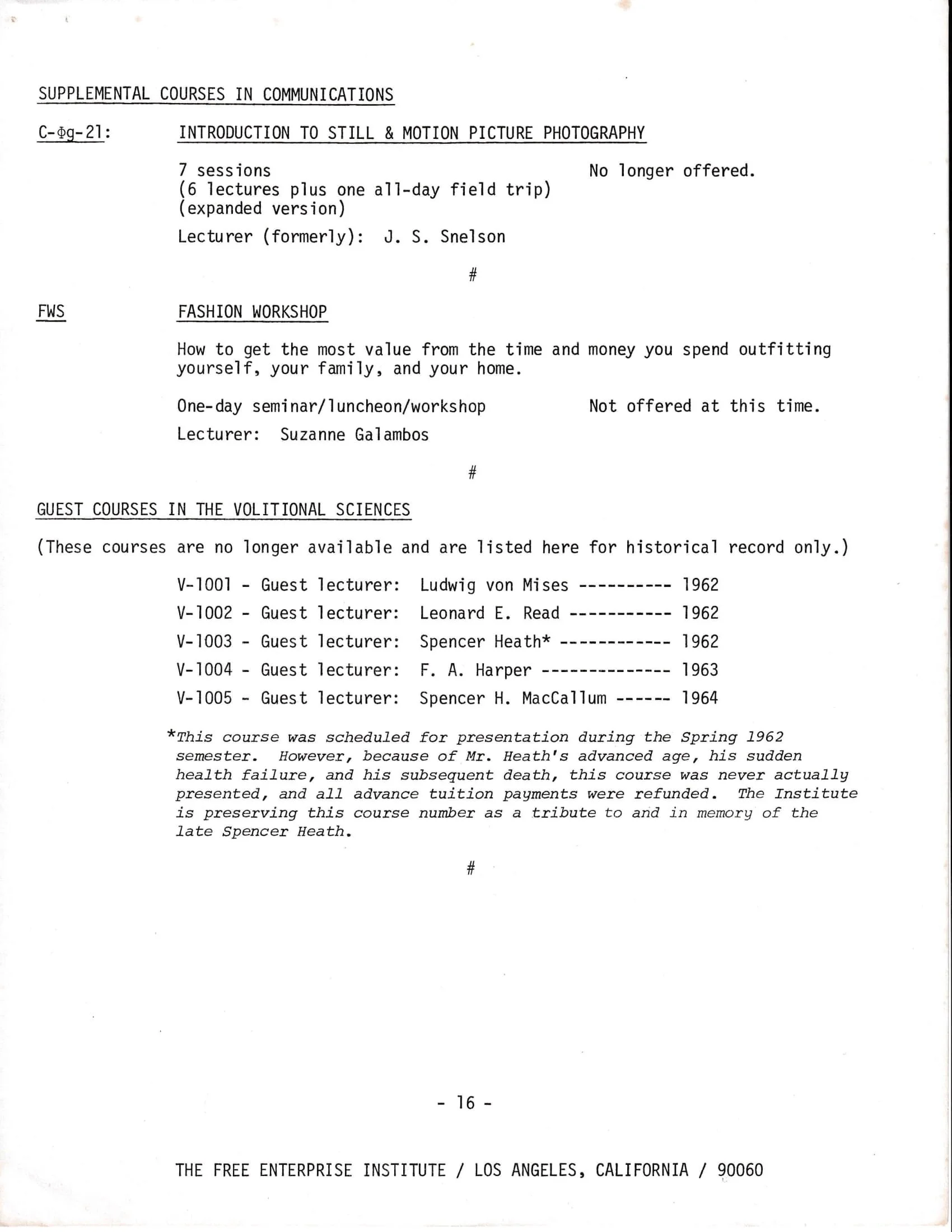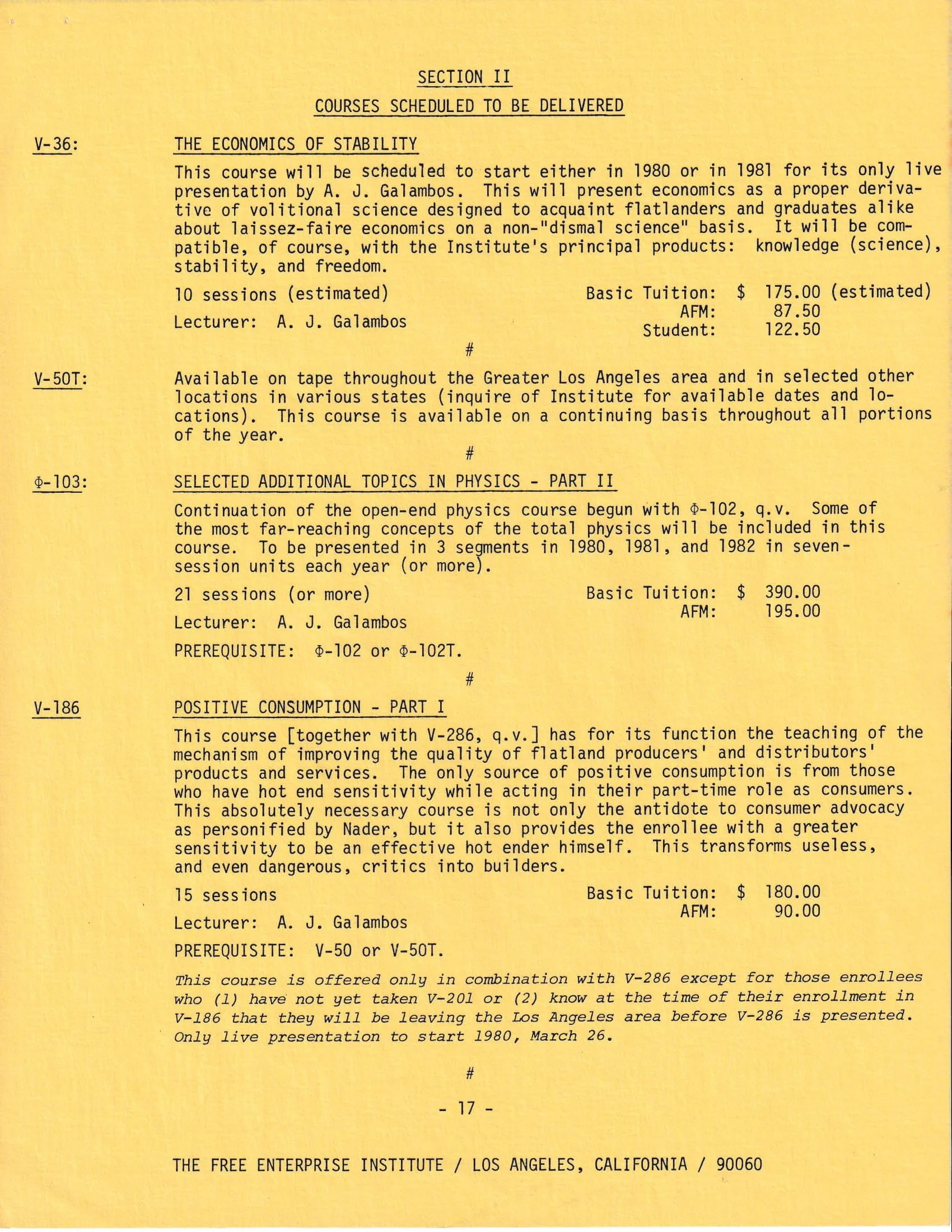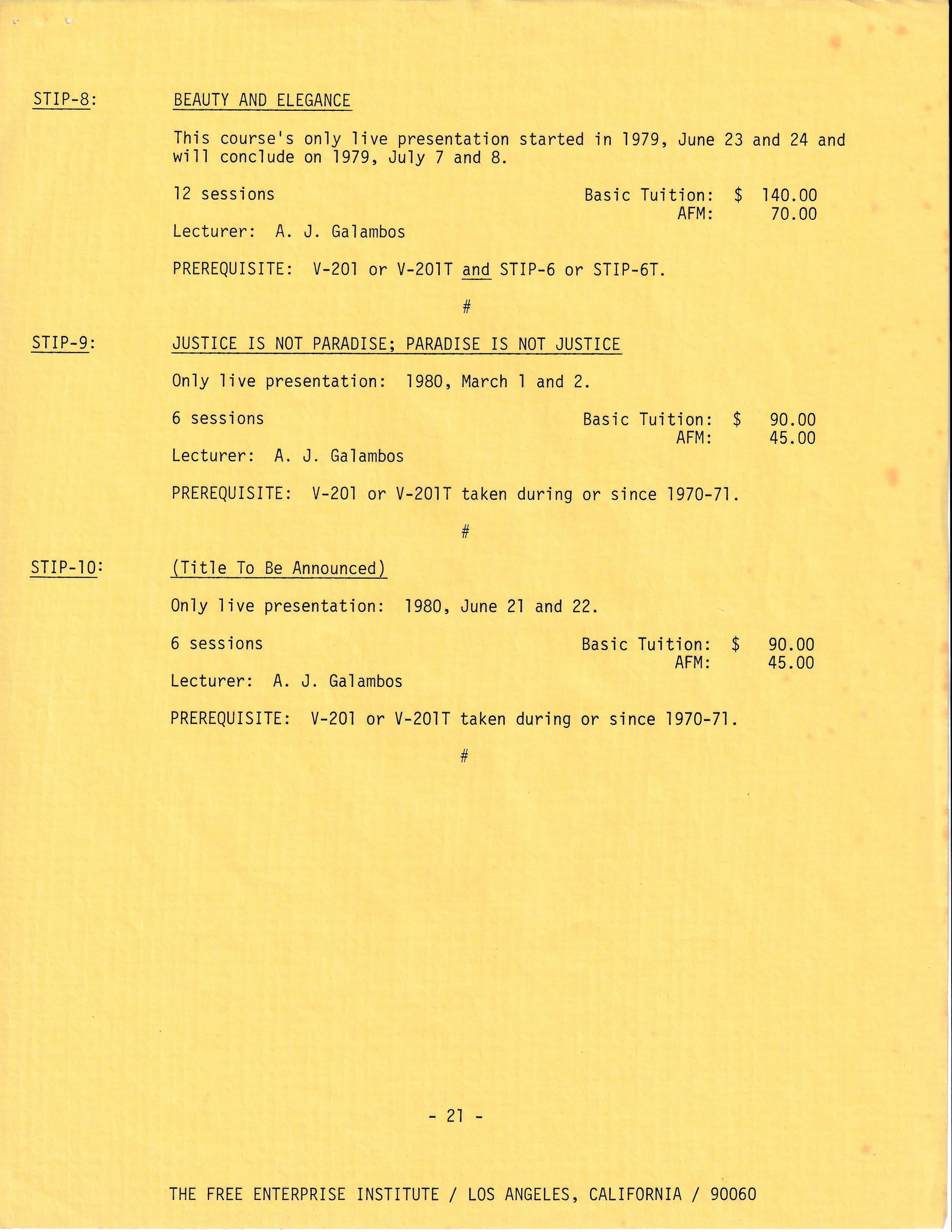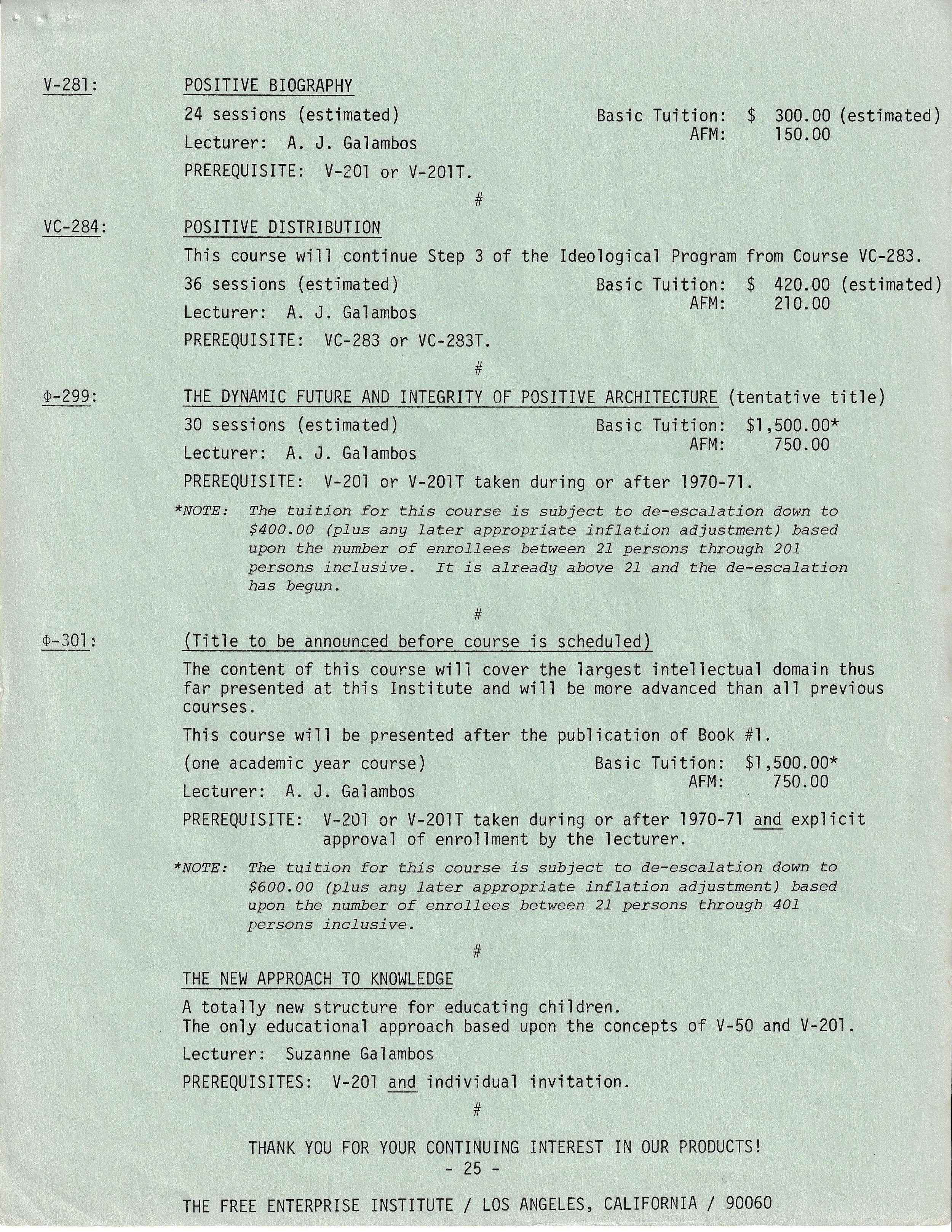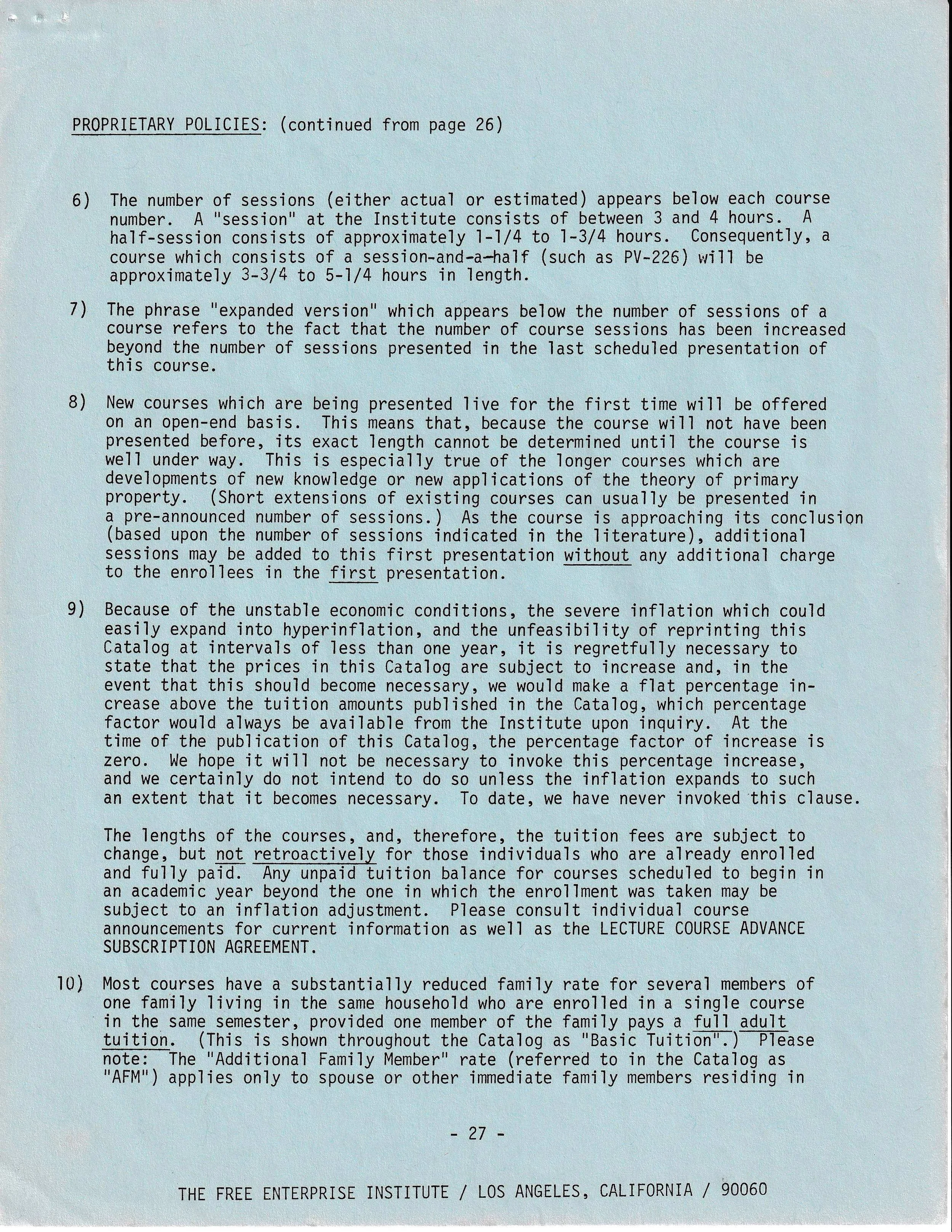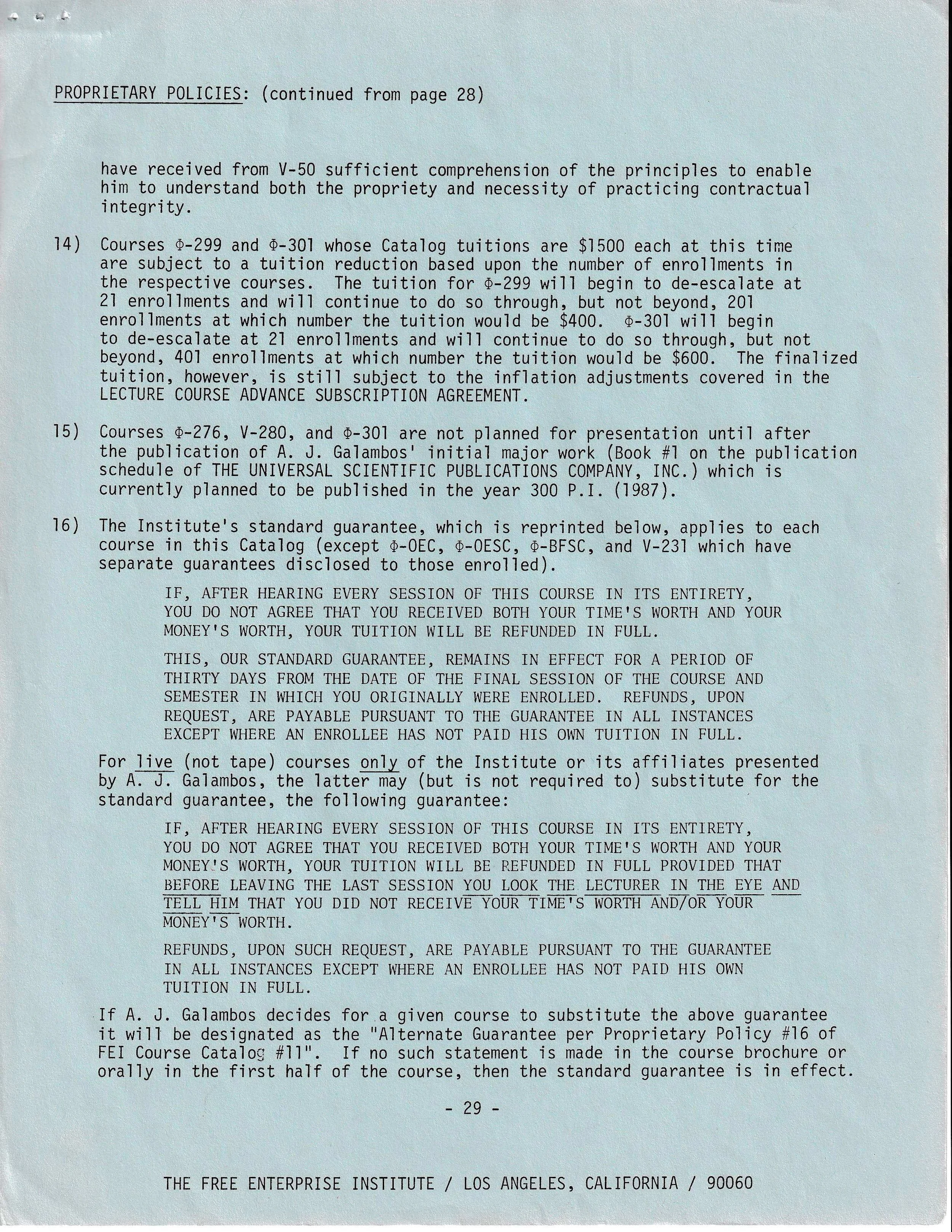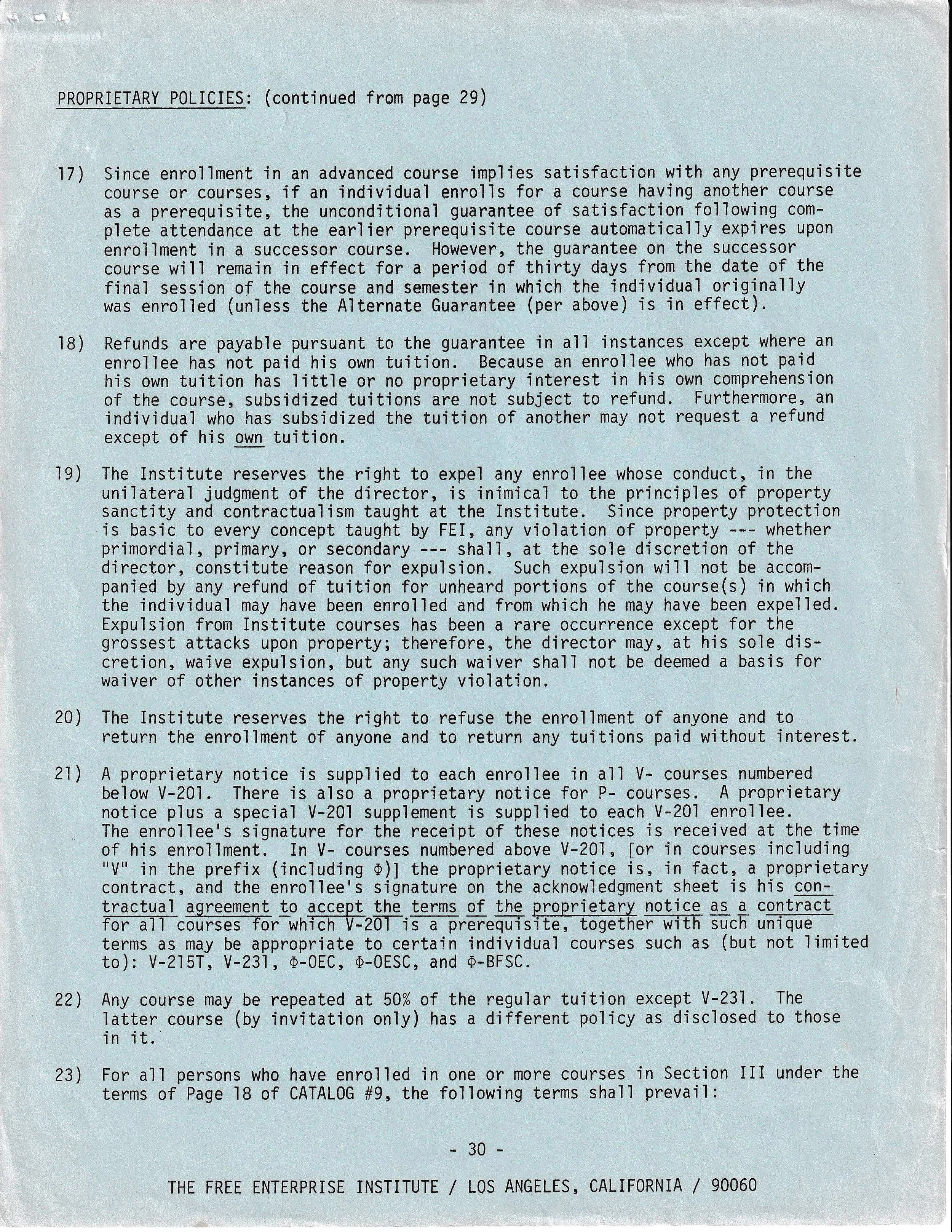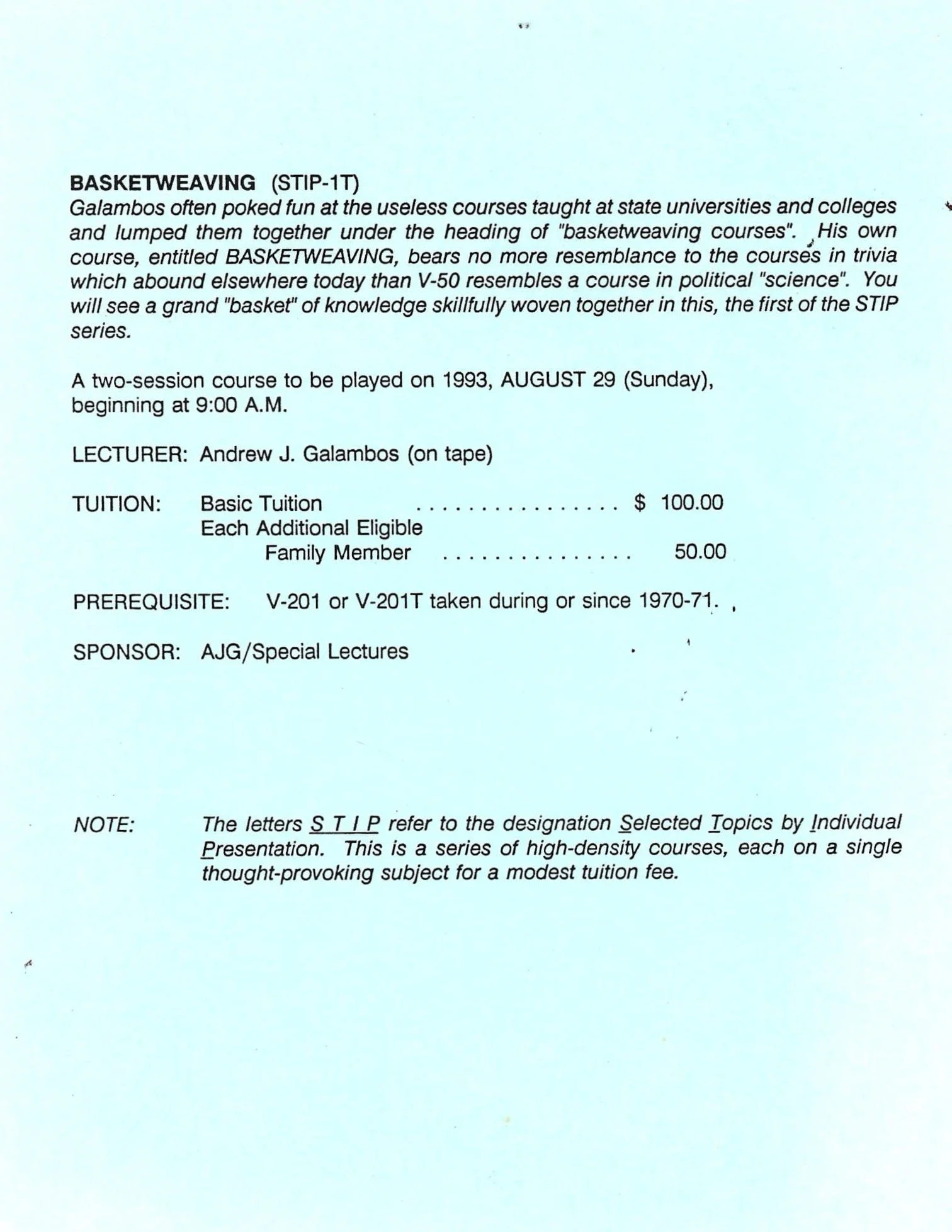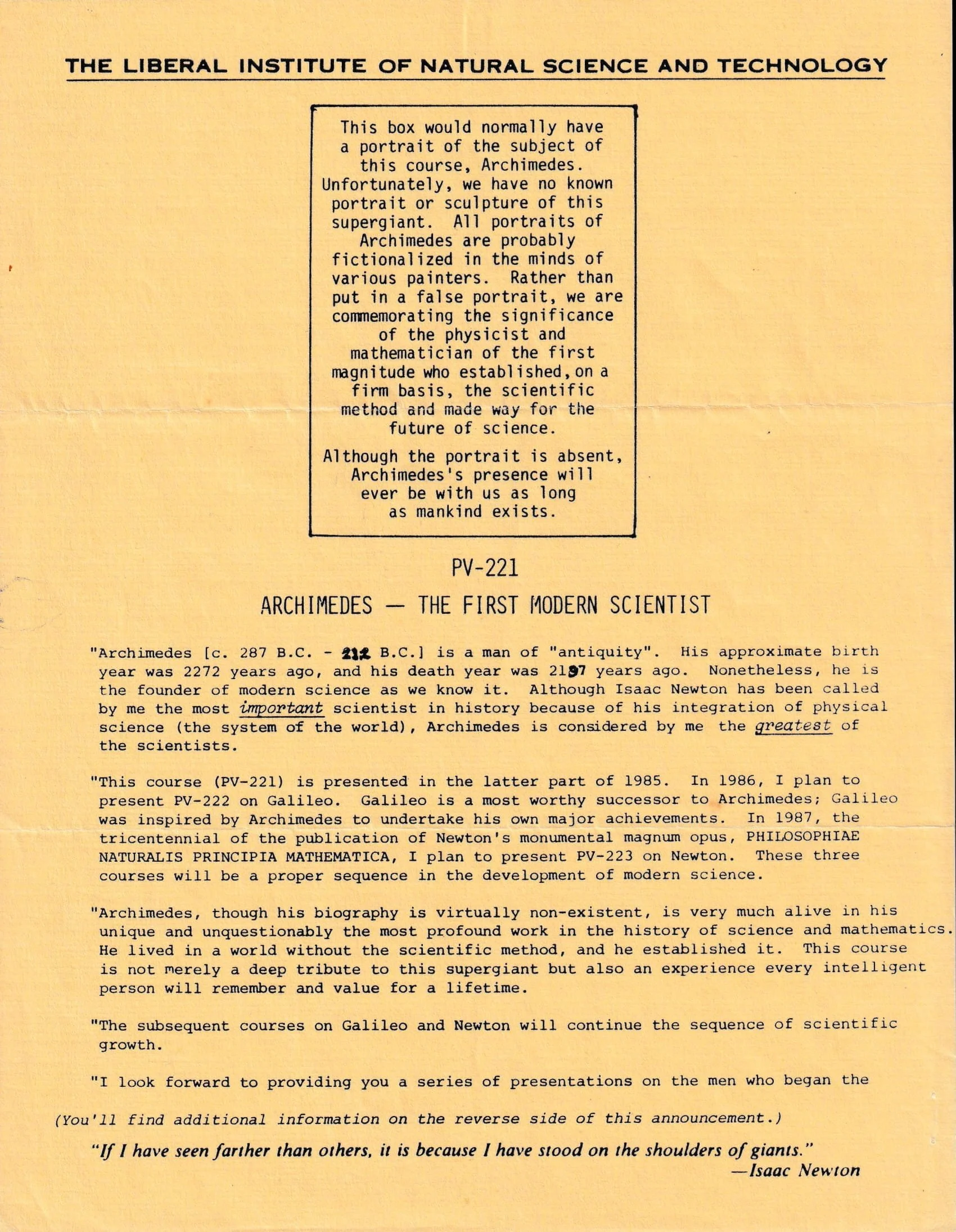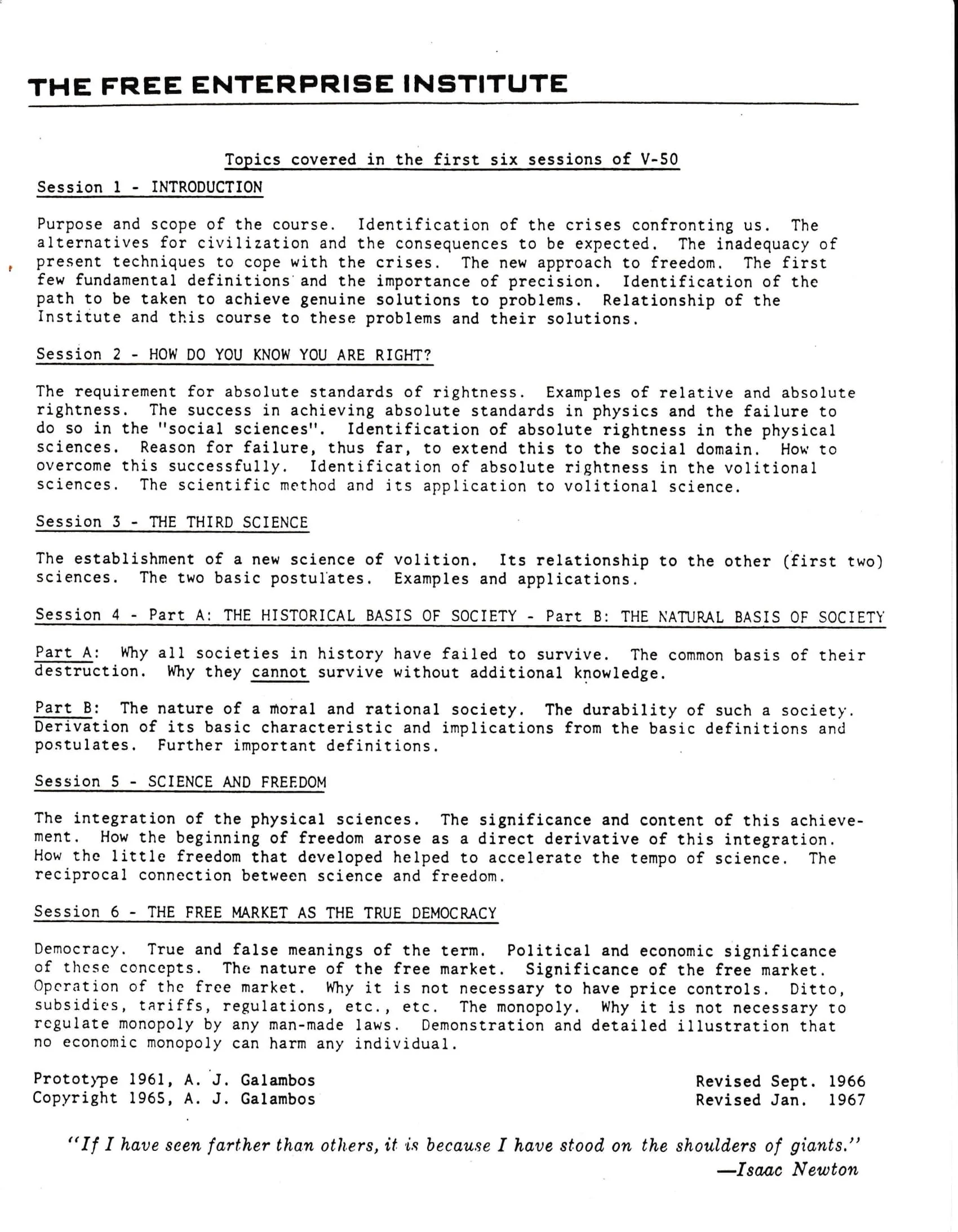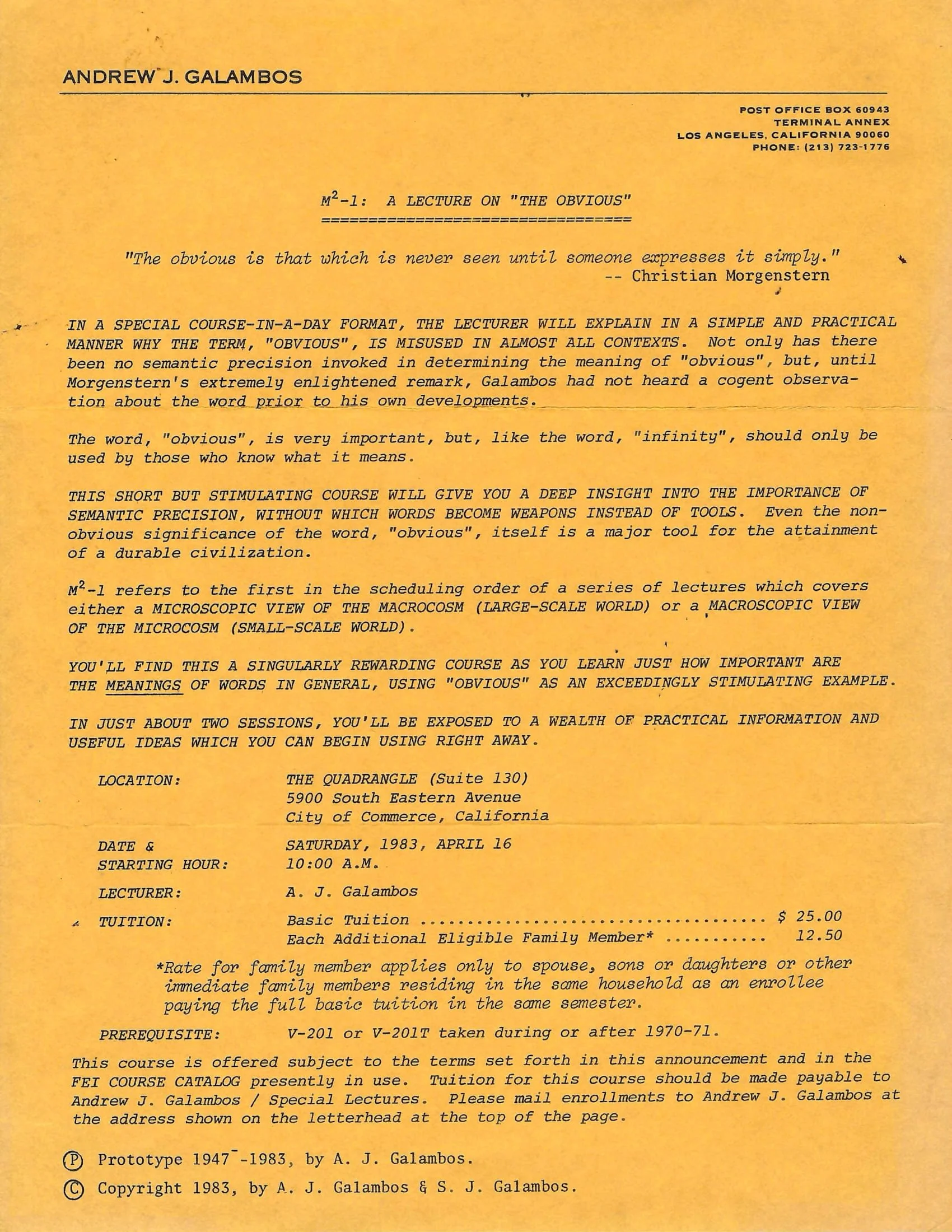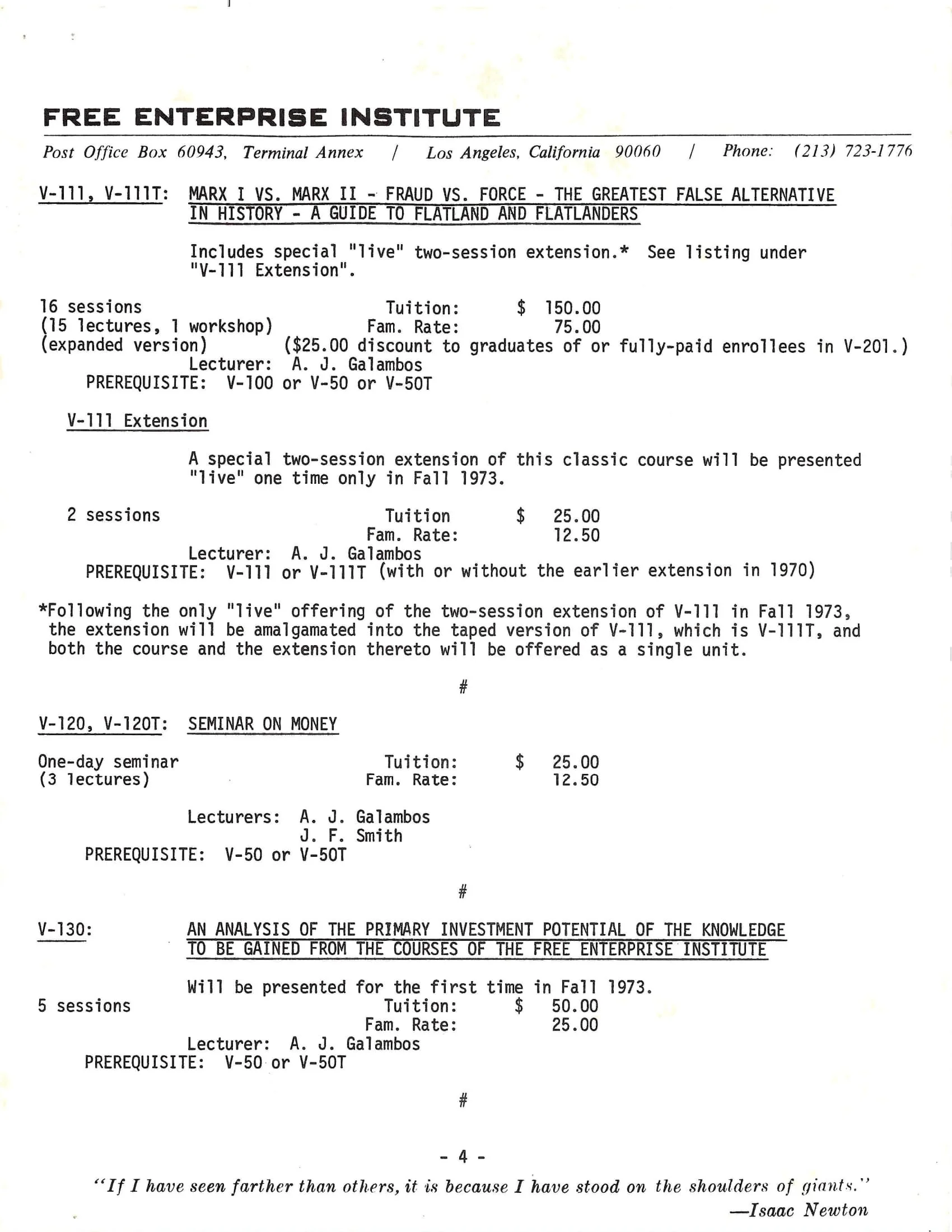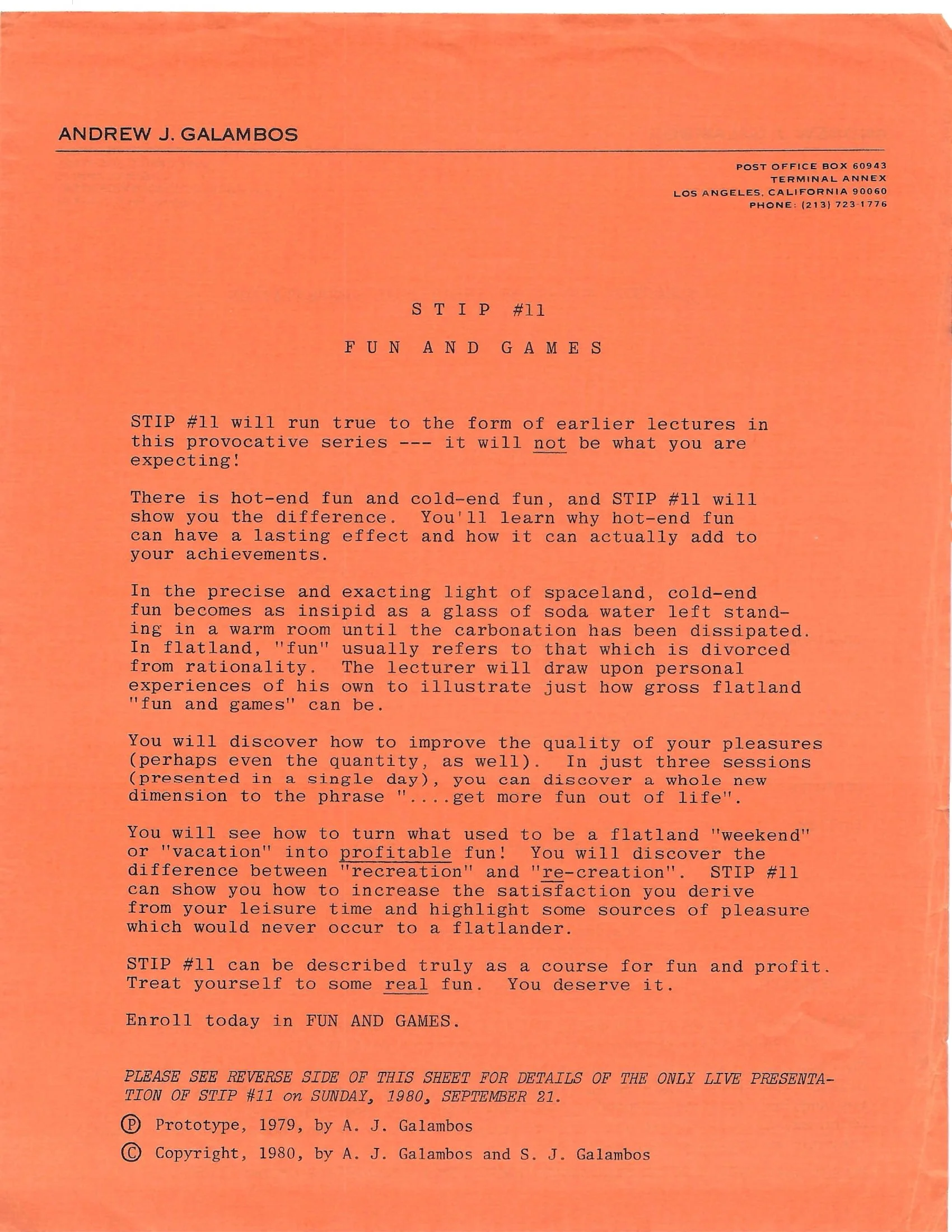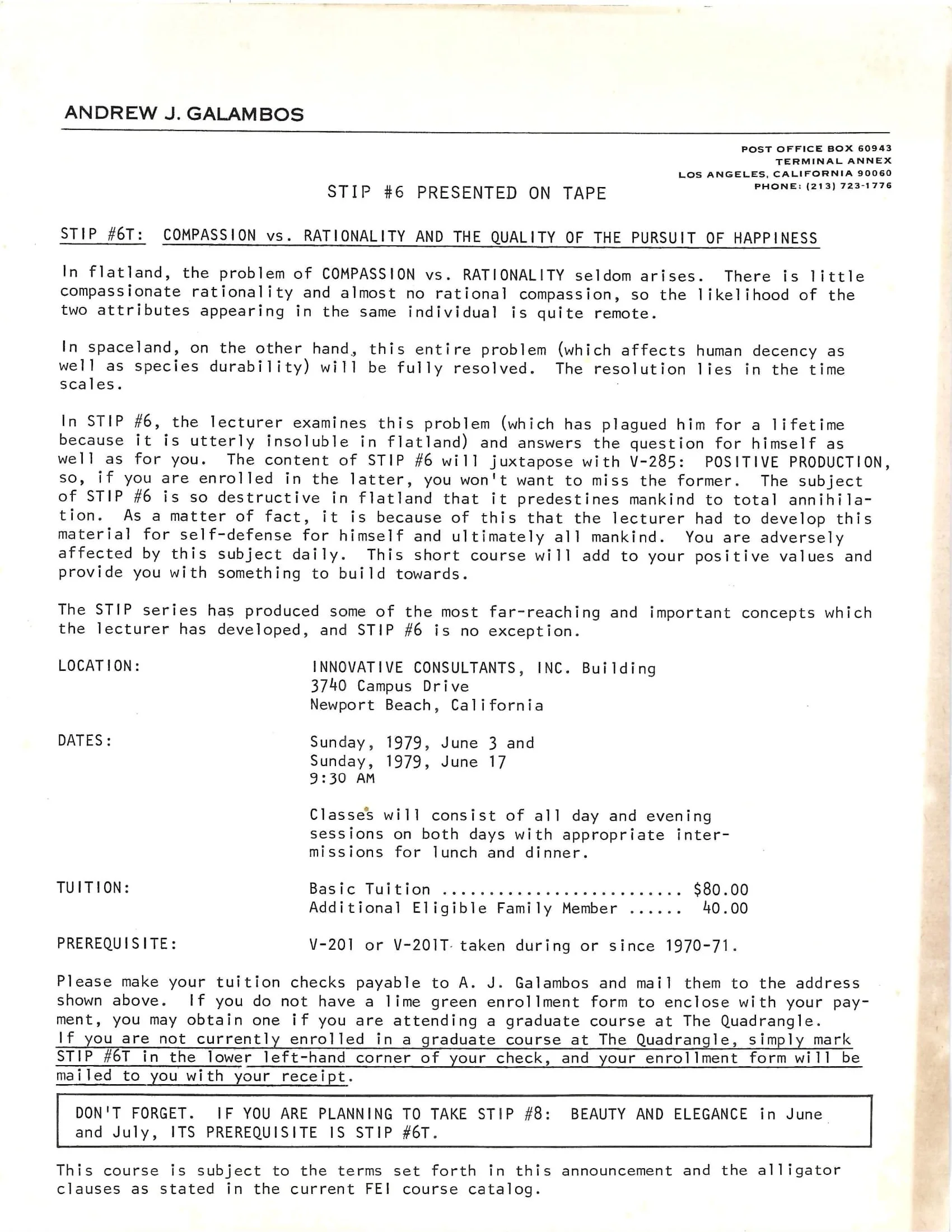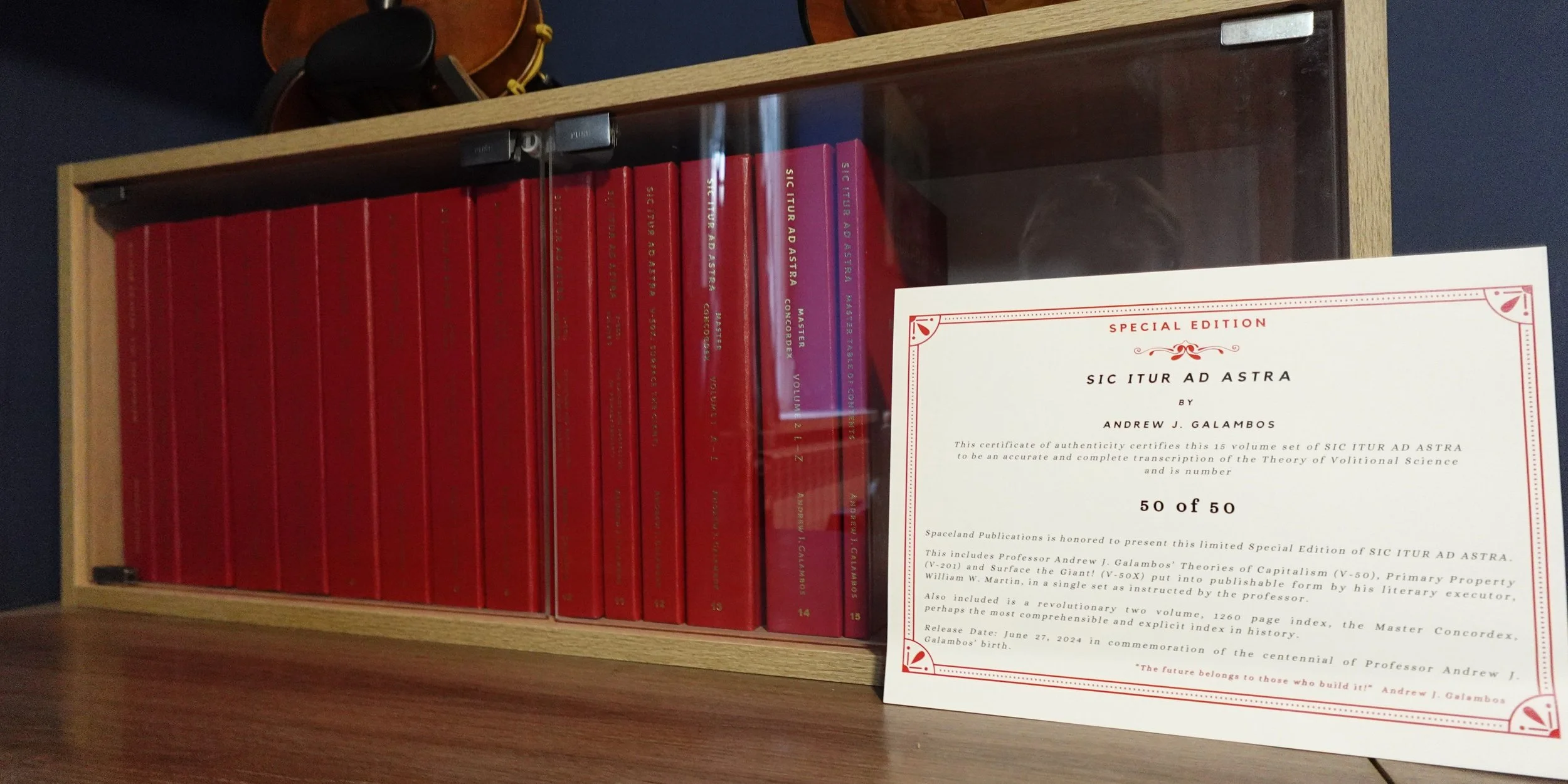History of the Free Enterprise Institute
Astrophysicist and developer of volitional science, Professor Andrew J. Galambos, presented his theories of capitalism and primary property, along with over 115 other courses, mostly in the Los Angeles area of California from 1961 to 1989, to students from around the globe. Nearly 30,000 people attended his lectures, presented live and on tape through his Free Enterprise Institute. What follows is a necessarily brief history of the Institute, including the betrayal of the professor and his ultimate triumph thanks to his appointed literary executor, William W. Martin. This triumph would manifest itself, finally, in 2003 with the completion of Galambos’ magnum opus, Sic Itur Ad Astra (Latin for “This is the way to the Stars”), and in 2024 with its publication in book form. For a more exhaustive account, please see Orbit! by William W. Martin, Andrew J. Galambos; Betrayal and Triumph by Bill Cobb, and Andrew J. Galambos; and Publish or Perish by Bill Cobb in the Spaceland Publications bookstore.
One month after founding the Institute, Professor Galambos presented his new theory of capitalism for the first time in Course V-50: “Capitalism—The Liberal Revolution” (Many years later, Course V-50 was attempted to be rebranded without authorization as “The V-50 Lectures.” However, this is not a name Galambos ever used.) Three years later, he followed this with his revolutionary theory of primary property, which provided the technologies that would enable freedom to be built for the first time in history. This course he would call V-201, which he stated in 1977 had received its finishing touches. He announced in 1971 at the Tenth Anniversary Alumni Meeting that he was ready to write the book covering the theories covered in these two courses and more.
Tragically, Galambos' enemies within his own market had other plans. Had they been successful, they would have buried the professor's ideas after his death, thus “killing” a man even after his death, a phenomenon Galambos referred to as “primary murder.” Indeed, a series of criminal events nearly ended any prospect of publication.
The first of these crimes occurred in 1984 when Matt Lange, the man the professor considered his best friend and the man in charge of the trust to fund the upcoming books, was found guilty of embezzling over a million and a half dollars from this trust. Possibly because of this massive betrayal, Professor Galambos suffered a coronary thrombosis in May 1987, leading to angina pectoris and a loss of precious time needed to replace the funds stolen by Lange and to write his book. Nevertheless, as Mrs. Galambos would write to the book pre-subscribers, they were “funding the publication of Galambos’ books (and other books on the book trust), out of our own pockets since Lange embezzled the trust fund. This is a moral decision that Professor Galambos had made.”
Though the professor went on lecturing and innovating for over two years after his heart attack, his declining health and what would later be diagnosed as early stages of Alzheimer’s disease would take their physical toll, while his declining market did little to rally his spirit. On November 5, 1989, he delivered his last lectures, once heard by thousands, before fewer than 30 people.
As the professor’s health deteriorated, Mrs. Galambos announced that she was editing the professor’s book from the transcripts of the V-50 and V-201 tapes. However, on July 22, 1995, she publicly announced she was diagnosed with terminal cancer. On February 14, 1996, she passed away, followed by the death of her husband on April 10, 1997. Following their deaths, James Gafford, the first appointed literary executor, took over the job of editing and publishing Galambos’ book. After realizing he was not up to the job, he resigned. The position of literary executor fell into the hands of William W. Martin, the successor literary executor.
Unfortunately, those running Galambos’ physical estate were not the men Professor Galambos thought they were. Wayne Joyner, a Los Angeles attorney, and Charles Hayes, a Coronado, California accountant, had been appointed co-trustees of Galambos’ estate. Neither of them had anything more than a superficial understanding of the professor’s theory.
After two years of strife and interference, the co-trustees fired William Martin without authority to do so. They stole his unfinished manuscript, handed it over to an editor the professor had never met and would never have approved, who, without so much as proofreading the text, had it published as Sic Itur Ad Astra: Volume One by The Universal Scientific Publications Company, Inc. This botched publication was filled with over 1,000 typographical errors, and hundreds of pages of crucial V-50 content were removed. It contained none of the advanced concepts of V-201.
William Martin was dragged through the courts by the co-trustees. Realizing there was no way he could win this legal battle, Martin refused to waste more time and money attempting to do so. However, nothing was going to stop him from fulfilling the duty given to him by his great friend and teacher. Using his own savings and recruiting the support of two financial backers (one of whom proved to last only a short time), along with the valuable assistance of Mr. Erik Falvey and the computer expertise of Mr. Benjamin Cooper, William Martin continued to fulfill his obligation to Galambos as literary executor. On March 21, 2003, Martin signed his name as literary executor to the foreword of the now completed 15-volume magnum opus of Professor Galambos, Sic Itur Ad Astra. With this, the volitional science revolution could begin, about which Martin wrote:
“Once every few hundred years, a great new revolution is born. It is liberating, exhilarating, full of dynamite. It rescues souls from estranged and sick lives. It does great work. As time passes, its beneficiaries grow rich and fulfilled. Their creative fires do not go out. They make a new world. Such occurred after Newton’s integration of the physical sciences, Darwin’s integration of biology, Maxwell’s integration of electromagnetism and light… Now we have the integration of the social sciences. A revolution so great that all the others pale in comparison.”
